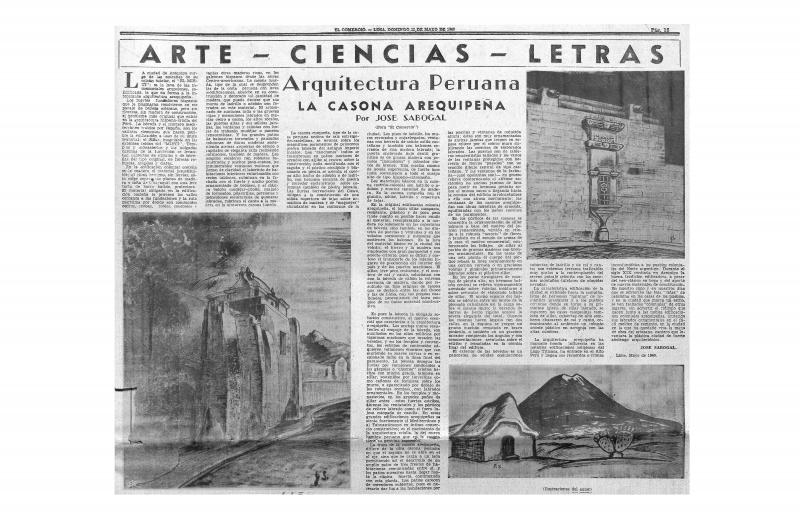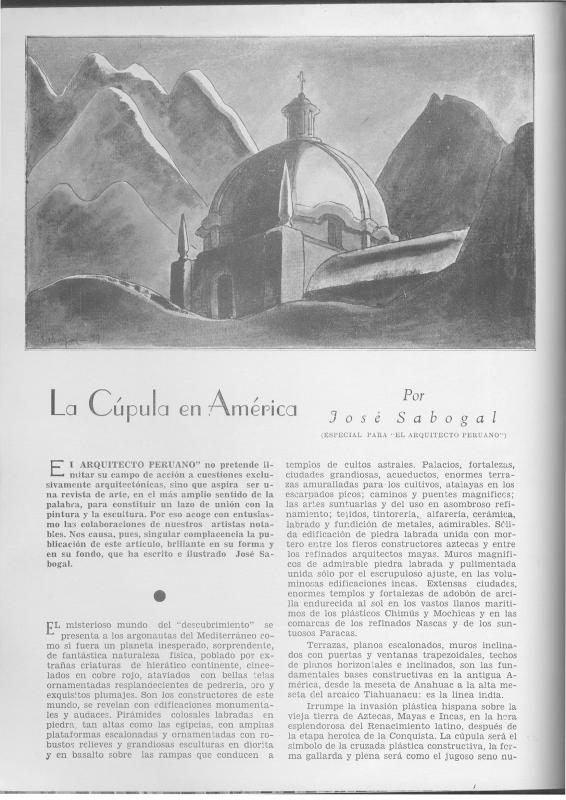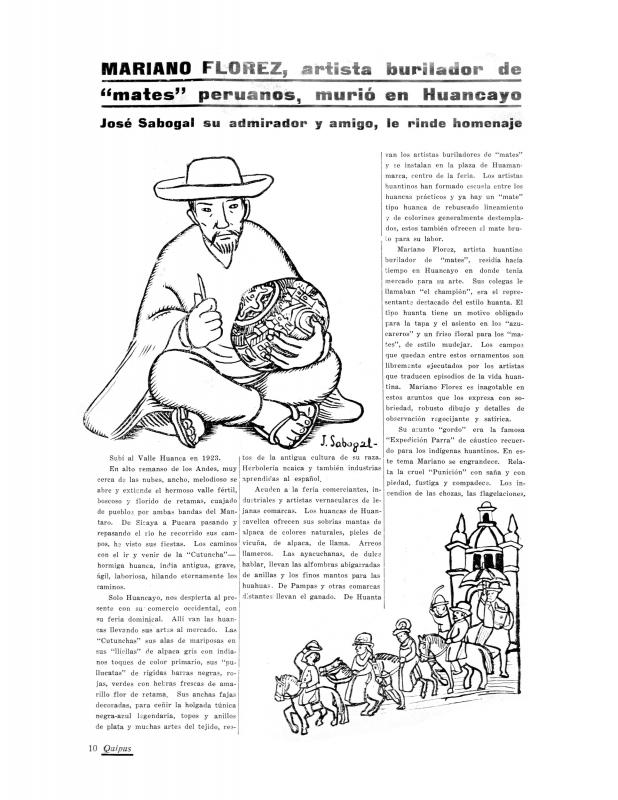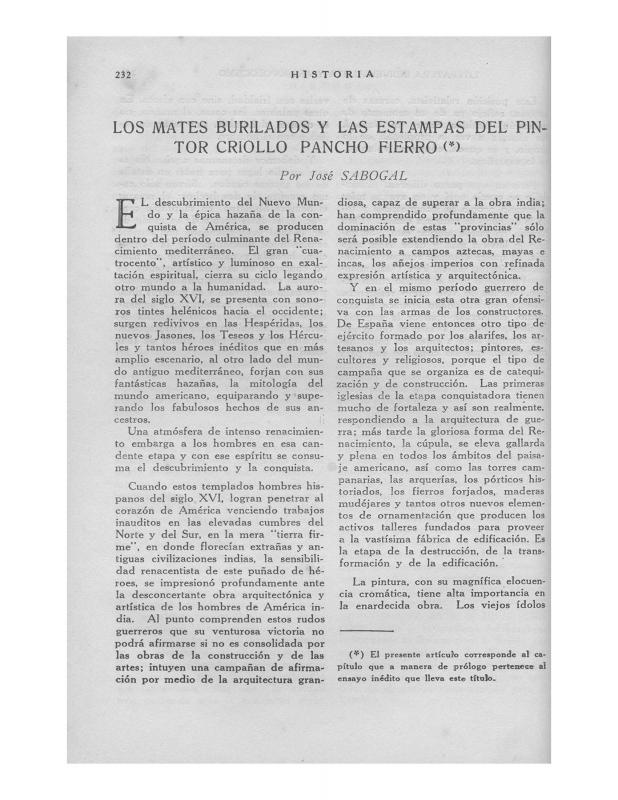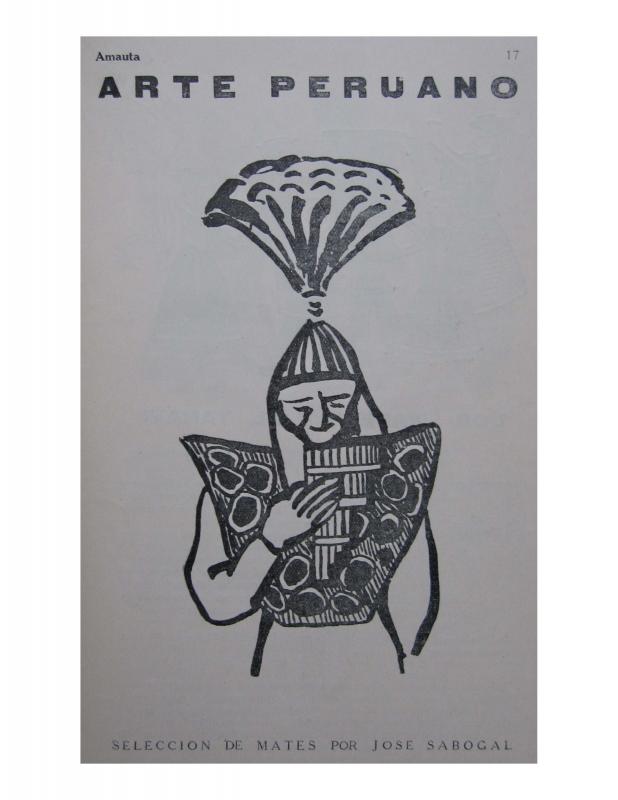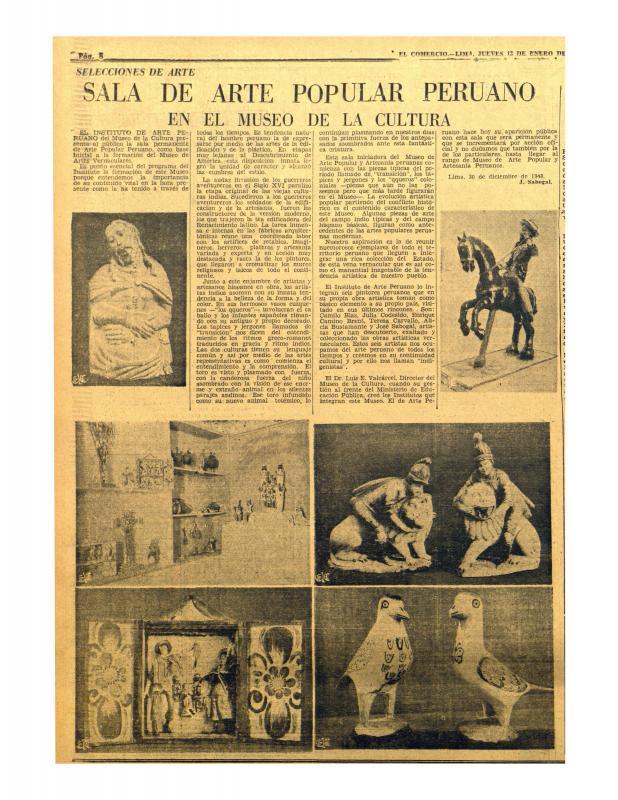This text by Peruvian thinker José Carlos Mariátegui (1895–1930) attests to the interest aroused by the work of José Sabogal (1888–1956). Mariátegui unabashedly supports Sabogal’s painting, upholding it beyond the leftist culture of Peru in terms that would become canonical. This document is of great historical importance. It reiterates and furthers an article by the same author published one year earlier in the sixth issue of Amauta, a publication key to the joint principles of the artistic and political avant-gardes of the time. Sabogal, who gave Amauta its name, was a regular contributor to a journal founded and directed by Mariátegui.
Pictorial Indianism, which peaked in Peru in the twenties, thirties, and forties, was part of a wider movement in Peruvian society that attempted to redefine national identity in terms of native elements. At a certain moment, however, the chief concern of Indianism was the revalorization of “the indigenous” and of an Incan past seen as glorious, and the movement also defended a mestizo identity that brought together “the native” and “the Hispanic.” José Sabogal was indisputably the leader and intellect behind Indianism in the visual arts. His deep sense of “rootedness” was influenced by regionalist tendencies evident in art from Spain (the work of Ignacio Zuloaga [1870–1945], among others) and in Argentina (Jorge Bermúdez [1883–1926], to name just one artist)—countries where Sabogal spent a number of years studying. When he returned to Peru in late 1918, he settled in Cusco, where he produced almost forty oil paintings of local characters and views of the city that were exhibited in Lima in 1919. That exhibition is considered the formal beginning of pictorial Indianism in Peru. His second solo exhibition in Lima—the one that enabled him to consolidate prestige—was held in the galleries of the Casino Español in 1921. In 1920, Sabogal joined the faculty of the new Escuela Nacional de Bellas Artes, which he directed from 1932 to 1943. The following painters, all of whom formed part of the Indianist movement, studied at that institution: Julia Codesido, Alicia Bustamante (1905–68), Teresa Carvallo (1895–1988), Enrique Camino Brent (1909–60), and Camilo Blas (1903–85).
[Of the many texts in the ICAA digital archive pertinent to Sabogal, the following were written by the artist himself: “Arquitectura peruana: la casona arequipeña (doc. no. 1173340); “La cúpula en América” (doc. no. 1125912); “Mariano Flórez, artista burilador de ‘mates’ peruanos, murió en Huancayo: José Sabogal su admirador y amigo, le rinde homenaje” (doc. no. 1136695); “Los mates burilados y las estampas del pintor criollo Pancho Fierro” (doc. no. 1173400); “Los ‘mates’ y el yaraví” (doc. no. 1126008); “La pintura mexicana moderna” (doc. no. 1051636); and “Sala de arte popular peruano en el Museo de la Cultura: selecciones de arte” (doc. no. 1173418)].

